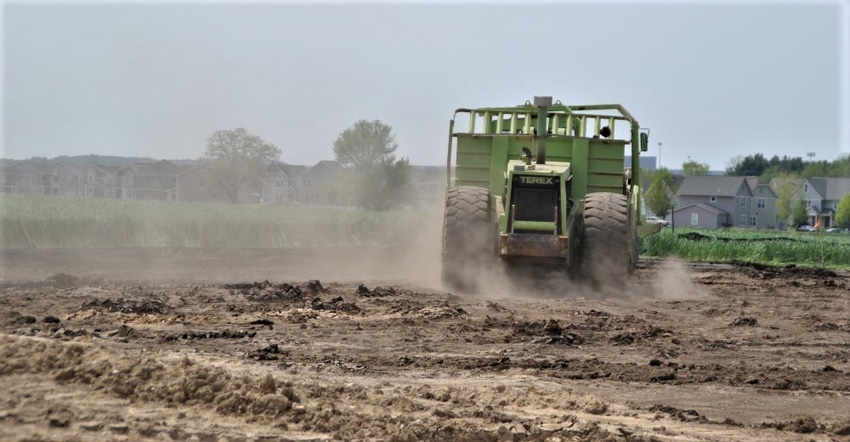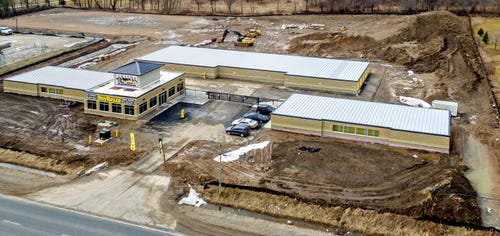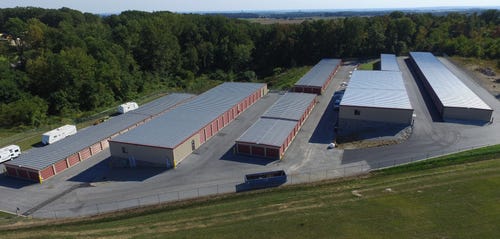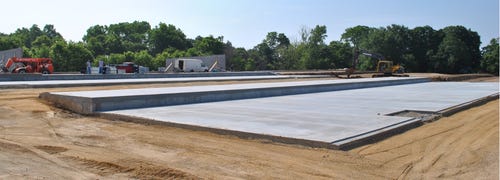Even if you find the perfect site on which to build a self-storage facility, you could face grading issues. Fortunately, you can accommodate changes in elevation and still have a profitable project.

A new developer looking to get into the self-storage business is typically concentrating all his energy on finding the best location. However, once you finally find that perfect site, it may not be flat. In fact, it may have a lot of grading issues! The good news is you can usually design the project to accommodate elevation changes and still be financially feasible.
Anticipating Land Cost
Your true land cost is the price of the land plus grading. You could pay $300,000 for your land and then determine the grading will be another $700,000. The trouble is costs for excavation and grading are difficult to estimate. Each parcel will have its own expenses. You need a good site plan to help determine if you can build your site and still make money.
So, how do you make a good plan? The key is to get a current survey that shows the site typography. People are normally surprised by the amount of fall on their site. It may look flat, but there could be a six- to eight-foot grade change. The survey will provide insight to many of the issues you’ll face.

Planning the Retention Pond
Among the first decisions you’ll need to make is where to put the retention pond and how big it should be. Typically, it’s placed in the lowest area of the site. Its size will depend on several factors, including your local climate, mainly rainfall. Some jurisdictions require you to accommodate for a 10-year rain event. These days, many communities will require you to design for a 100-year water event. Your civil engineer will calculate the size necessary for compliance.
Will your project use surface drainage for all the water run-off, or will you be required to have storm drains? If the latter, all water will run underground to the pond. Having storm drains is typically best, and many cities require them, but they’re more expensive than surface drainage.
The city may also require that the water coming off your roof go directly into the storm sewer so it’s “clean.” This will also affect the pond size and shape.

Choosing the Building Layout
Your topography survey will give you an idea which direction your buildings should be oriented to minimize the amount of grading to be done. The rule is you try to take up the fall in grade between buildings if possible. Normally, you can take up to 18 inches of grade between two buildings (eight inches to a foot is more common).
If this isn’t enough to compensate for all the fall on the property, you’ll need steps. You can design a step foundation up to every 20 feet. It can be done every 10 feet, but your site then turns into a ski hill. Standard step sizes are six, eight or 12 inches, allowing you to change elevation quickly if necessary.
Some owners don’t like steps because of the increased costs for the concrete and building, plus they’re harder to snow-plow. Standard steps run across the width of the building, while longitudinal steps run the length of the building. Longitudinal steps add significantly to foundation costs and constrain the unit mix, so developers try to avoid them.
One alternative to eliminating or at least minimizing standard steps is to build on a 1 percent slope. This means if you have a building that’s 200 feet long, one end will be two feet lower than the other. This works well when using surface drainage. It creates many benefits because it minimizes your steps, which reduces costs, while creating a nice water flow so you won’t have any ponding. The steel buildings used in our industry that have a flush header and jamb system work best to accommodate this approach, as the doors are installed to follow the grade.
Another benefit of designing on a 1 percent slope is all your gutters will drain properly. You must ensure there’s a downspout on the low end of the building. I see many developers who want to design their whole project level because they think it’ll be the best for the consumer. That’s true, but you don’t want any water ponding, as it’ll ruin your pavement over time. Having your whole site drain on a 1 percent slope is best.
If your site has a grade change of more than 10 feet, consider developing a multi-story building. If you use a two-story-into-a-hill design, sometimes called over/under building, it’ll allow you to build two floors without the need for an elevator. These facilities are quite desirable, and the extra square footage easily offsets the additional costs of grading and the concrete retaining wall.

Other Considerations
When preparing the grading plan for a self-storage property, it’s a good idea to map out underground utility and bollard locations. Each building typically has cameras and lighting, which requires separate conduits. Gates, keypads and lighted signs will also require conduits. Automated gates will need concrete foundations, which should also be mapped. Excavating and installation of these features may be done by your grading contractor and could be part of the bid.
During the planning and bidding process, consider where topsoil will be stored or disposed. On most properties, a layer must be scraped off and replaced with free-draining fill (aka gravel), which means the topsoil has to go somewhere. Most developers plan to cover the entire property with storage units and driveways, so the topsoil must be hauled away. Your grading contractor may include this in his bid. Local materials suppliers or farmers might be willing to haul it away at no charge, or if you’re lucky and timing works out, you may even be able to sell it.
If you’re developing the property in phases, you’ll need to decide how much prep you’ll do on the land for later development. If you can bear the cost, it’s best to do all the grading up front, and possibly the later-phase paving and foundation. This reduces wear and tear when you add on and avoids more mess.
Work with your civil engineer and city staff well in advance to understand all the obstacles you’ll face. Comprehensive planning will help you reduce the number of design changes, potentially saving you time and money.
Jamie Lindau is a self-storage owner and the national sales manager at Trachte Buildings Systems, which designs, manufactures and erects a full line of pre-engineered and customized steel self-storage systems, including single- and multi-story, portable storage, interior partition and corridor, and canopy boat/RV. He presents Trachte’s free “Building Blocks of Self-Storage” seminar in more than a dozen cities throughout North America every year. For more information, call 800.356.5824; visit www.trachte.com.
About the Author(s)
You May Also Like





